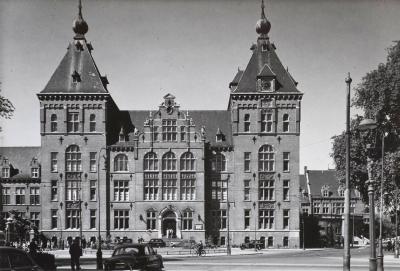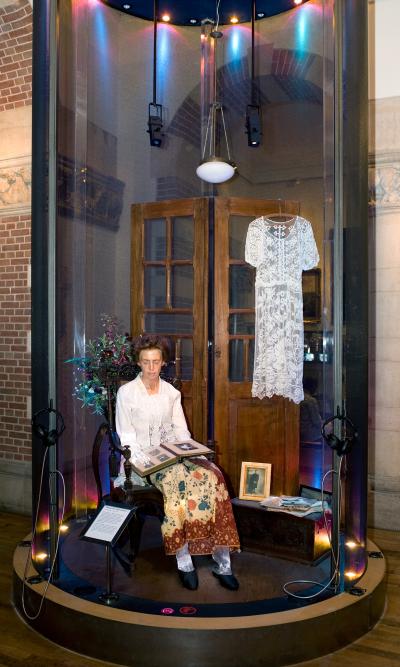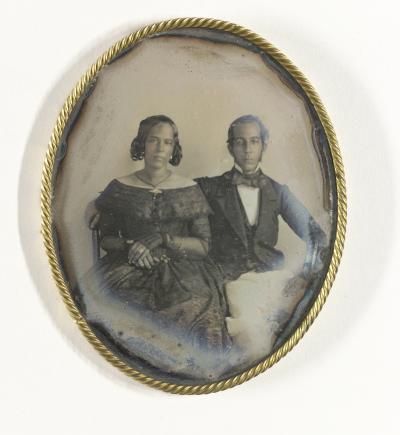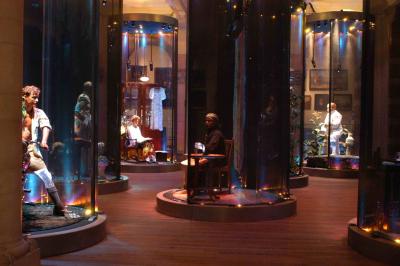A museum with a colonial past – in the Netherlands
Ethnography and Development Cooperation
On 25 November 2011 Dutch Parliament spoke about the future of the Tropenmuseum in Amsterdam. This museum, part of the Royal Tropical Institute, started as the Colonial Museum, a Department of the Colonial Institute that was founded in 1910. The initiative for this colonial centre of expertise came from private colonial entrepreneurs, different societies and organizations like the Amsterdam Zoo Natura Artis Magistra (Artis) and the society for the Advancement of Industry, as well as from various Governmental bodies. The museum was a merger of the initial Colonial Museum in Haarlem (founded in 1864) and the Ethnographic Museum of Artis (founded in 1856). After Indonesian independence, the Colonial Institute had resumed its work as the Royal Tropical Institute, dedicated to development cooperation. The now Tropenmuseum gradually had turned its international activities and exhibition policies towards issues related to culture and sustainable development as well.
Anno 2011, the members of Parliament were concerned about the unilateral Governmental decision to stop financing the museum from the Ministry of Foreign Affairs’ budget for development cooperation. They explored the option to transfer financial responsibility to the Ministry of Education Arts and Sciences. The extreme right wing party of Geert Wilders, campaigning against development cooperation as well as for budget cuts in public spending on the arts, declared with respect to the Tropenmuseum that exhibiting the history of Dutch colonialism would be the only valuable contribution of the museum supposedly could make to the public domain. State Secretary of Culture Halbe Zijlstra answered with a witticism: in that case, the museum should carve in its façade the famous 1945-1950 saying: The Indies torn, Disaster born (“Indië verloren, rampspoed geboren”), suggesting that a return to the Colonial Museum only would serve revisionist historiography. Many others as well stressed the importance of the link between the contemporary international activities of the museum and its cultural programmes in Amsterdam. Both policy lines are founded in a historical approach to the collections, connected to restitution, new acquisition policies and a role for the museum in Dutch multicultural society. In these policies photographs – as the sites of interesecting histories – play an important role.
Given the current economic situation, and the budget cuts with respect to development cooperation as well as to culture, the Tropenmuseum faces many challenges. These also concern the at times heated debates on globalization and its impact in contemporary Dutch society. Regardless, however, of how the colonial past is perceived in contemporary politics or what the museums future prospects are, nobody challenged the existing link between the ethnographic collections of the museum and the colonial past of the Netherlands. This is what the museum itself explicitly has put on display in the nine semi-permanent galleries that were refurbished between 1996 and 2008. Implicitly it also is expressed in the museum building’s architectural design to which the State Secretary referred. One such decorative detail relevant to PhotoCLEC, is a 1924 tableau carved in oak wood by sculptor W.M. Retera,, placed above the fire place in the prestigious Board Room. The tableau has three panels, dedicated to the former Colonial Institute’s three programmes: Tropical Hygiene (now Biomedical research), Commerce (now Development Planning and Policy) and Ethnography (“Volkenkunde” ). The ethnography panel shows a photographer. He is one of the little naked babies, the “putti”, that surround the central figure of Ganesh. As all putti everywhere, these putti also make fun, they try to seduce and play with Lord Ganesh, the God of Wisdom, some with a musical instrument, some dancing. The one in the corner takes his picture.
History and legacies of the slave past
The first explicit reference to the colonial past was made in the refurbished gallery on Latin America, which opened in 1999. For the first time in the Netherlands, a museum integrated in this exhibition a display on the Dutch slave trade and slave labour in the Caribbean. One showcase makes a statement on the work of ethnography in silencing how many Dutch collectors were slaveholders as well. It shows the artifacts donated in 1873 by G.P.C. van Breugel, a former Dutch owner of plantations in Suriname. He collected these during his 1823-4 inspection tour of his Surinamese estates. Van Breugel’s archival legacy indicates that many of his objects once originated from the community of the enslaved workforce on his plantations. However, once in the museum the objects had been attributed to Maroons, the free population of former run-away slaves. The identity of this collector as a slaveholder had been obscured, as has been the case with many others.
It would not be easy to present ‘ evidence’ of slavery in the Dutch colonies with photographs. Slavery in “the West” was abolished in 1863, whereas the earliest photographs known so far are from the 1860s. In 2009 one unique Daguerreotype from 1846, depicting the couple Maria Louise de Hart and Johannes Ellis, was acquired by the Rijksmuseum in Amsterdam.
Indirectly this double portrait refers to slavery, since the mother of Maria Louise de Hart had been enslaved until someone had purchased her freedom. Such enslavement will have been the condition of the parents or grandparents of most people of Afro-Surinamese and mixed descent portrayed in the late nineteenth century. However, the portraits as such do not present family histories, they depict but specific (free) people. And this is an inherent feature of colonial portrait photography. Photographs of gang labour in the fields, of slave quarters, prisons and other aspects of slavery so far did not turn up and maybe do not exist. Instead, the museum exhibits eighteenth and nineteenth century drawings and prints, as well as miniature diorama’s from the early nineteenth century, whereas the visitors hear a contemporary “soko” choir singing laments that originate from the slave past. History thus is connected to memory in contemporary society through the intangible heritage of a song tradition and the orality of photographs that make people talk about their enslaved forefathers. Recently this repertoire of references to slavery has been extended by a display on a DNA-research project called “ Back to the roots”, which has been embedded in an artwork by the Surinamese Maroon artist Marcel Pinas.
The Netherlands-Indies – A Colonial History
In 2003 the Tropenmuseum opened a new gallery on the entanglement between colonialism in the Netherlands Indies, the history of the collectors of the Tropenmuseum and the history of ethnographic museum display. Central theme of The Netherlands Indies: a colonial history are the close colonial encounters overseas (warfare, love affairs, oppression, conversion, barter and exchange, to name a few) that at home changed into ethnographic modes of othering. The heart of the exhibition, in line with the colonial tradition of displaying the life casted or sculpted life size images of ethnic types, exists of seven sculpted or life casted historical archetypes. In a “Colonial Theatre” they narrate the views and experiences of, among others a Governor-General, a missionary’s wife, a painter, a soldier, or a tobacco planter who became the Minister of Colonies and one of the founders of the Colonial Institute. These historical archetypes connect collecting to colonial expansion, to the development of arts and sciences, to a civilizing mission and to economic competition in Europe. In this context, photography has been put on display both as a tool of empire and as a contemporary resource to try and understand the broad spectrum of involvements with colonialism. In the display on colonial education policies, for instance, school class photographs with children in ethnic separated schools, indicate the differences in legal status among the colonial subjects.
Photography as a tool of empire most explicitly is represented by some of the two live casted historical archetypes representing the wife of a Dutch colonial civil servant, and an anthropologist. The somewhat depressed woman, wearing a batik belanda style sarong and a white blouse (kebaya), sits in her rocking chair with a photograph album on her lap. When visitors listen to her story through the headphones, they can hear how she muses on her last letter to her young son, who was sent to the Netherlands in order to get good education, and the letter she received in return. The letters are a suspended conversation. Inevitably they express a phase difference caused by the long distance mail boat connection. The relatives hide their feelings of despair and loneliness, emphasizing positive news in a casual style, and sometimes a letter also bring a photograph. The album indicates the ambiguities of colonial kin keeping: collecting the family in pictures, while trying to keep family bonds alive.
The second historical archetype that refers to photography as a tool of empire represents cultural anthropologist C.C.F.M. Leroux, who in 1926 takes a photograph at Albatros bivak during the American-Dutch Central New Guinea expedition. He is on display; the photograph of hum making the picture is on display, as well as the picture he actually made: of Papua’s posing while standing upright in their boat, is on display as well, together with a camera, a gun, compass, measurement tools and other essential equipments for geographical expeditions. Charles Leroux with his camera and his confidence in rational science, is the counterpart of the blind seventeenth century ethnographer Georg Everhard Rumphius earlier in the exhibition, who represents the first explorers trying to understand and classify the diversity in nature and culture within a Christian framework, while struggling with notions of monogenesis and the Great Chain of Being.
To the Tropenmuseum, The Netherlands Indies: a colonial history, as one out of nine semi-permanent displays, is not an aim in itself, as some Members of Parliament suggested. The exhibition is a ‘hinge’ between past and contemporary international relationships. The future will learn whether the pending change in ministerial patronage from Foreign Affairs to Culture, was just an administrative move, or brought major changes in the work of the collections as well.



